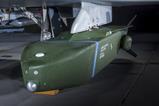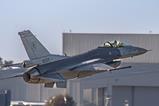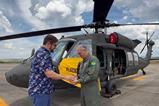The UK government’s decision to send its Watchkeeper uncrewed air vehicles (UAVs) into early retirement marks an ignominious end for a once-ambitious effort to boost the British Army’s airborne intelligence, surveillance, target acquisition and reconnaissance (ISTAR) capabilities.
Announcing the step among a tri-service package of decommissioning measures on 20 November, defence secretary John Healey said 46 Watchkeeper air vehicles would be removed from use in 2025, while describing them as “14 year-old army drones that technology has overtaken”.
“We are getting rid of Watchkeeper because that system has been in service since 2010 and, according to all the military chiefs, is out of date,” minister of state Lord Coaker added in the House of Lords on 25 November. “The Ukraine war has shown that we need to replace it with something else,” he adds.
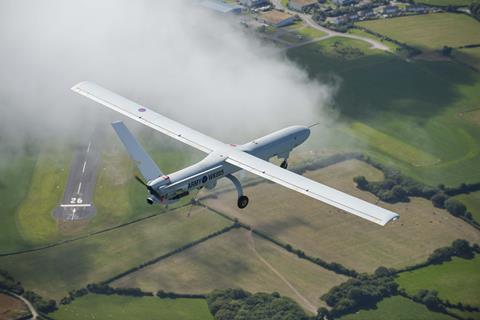
Potential perceived shortcomings could include the type’s low operating altitude – it flies at a maximum of around 15,000ft – engine noise, vulnerability to hostile fire and sizeable logistics footprint for deployment and operation. The type also is not equipped with air-launched weapons.
Acquired as a replacement for the BAE Systems Phoenix – a less capable type which saw use as a reconnaissance asset over Kosovo and Iraq in the 1990s – the Watchkeeper platform is a further development of Elbit Systems’ Hermes 450 tactical UAV. It carries an electro-optical/infrared sensor and the Thales UK I-Master synthetic aperture radar/ground moving indication payload.
A combined development and production contract awarded to Elbit/Thales joint venture U-TacS in August 2005 and worth £700 million – at that time the equivalent of $1.25 billion – covered the delivery of 54 UAVs, plus ground control stations and other supporting equipment.
In advance of fielding the new type, the army contracted Elbit to provide Hermes 450s for use in Afghanistan and Iraq from 2007, under an urgent operational requirement activity dubbed Lydian.
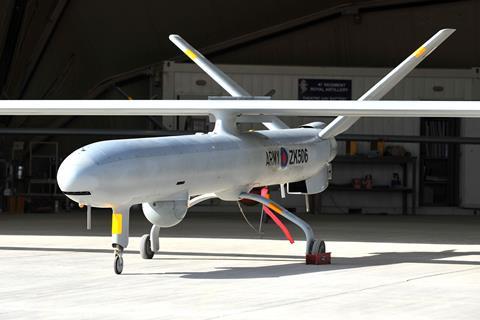
The first flight of a Watchkeeper air vehicle took place in Israel in April 2008, with a UK debut completed two years later: a 20min sortie flown from the ParcAberporth test centre in west Wales.
Programme delays meant that the system was only deployed to Afghanistan in September 2014. Full operational capability was declared in November 2018, with a full release to service clearance made in April the following year.
Additional deployments included operating from Ascension Island, and the type was also flown in support of the UK Border Control service in late 2020 as the nation attempted to tackle illegal immigration by small boat across the English Channel from France.
Meanwhile, the 46-aircraft figure cited by the Ministry of Defence (MoD) indicates that 15% of the original fleet has been depleted within a decade, including during several training accidents.
Most recently, the army deployed Watchkeepers and more than 60 soldiers to Estonia to participate in the exercise Athena Shield, with sorties flown from near Parnu airport in the south of the country.
Operated by 47th Regiment Royal Artillery, the deployed aircraft recently underwent a sensor upgrade to enhance its ISTAR credentials.
“The training involved working with Estonian military and civilian authorities to plan and execute flying operations in different weather conditions,” the army says. “The flights also included conducting airspace deconfliction and interoperability with the Estonian control and reporting centre, part of NATO’s air defence system to monitor airspace across the Baltic region.”
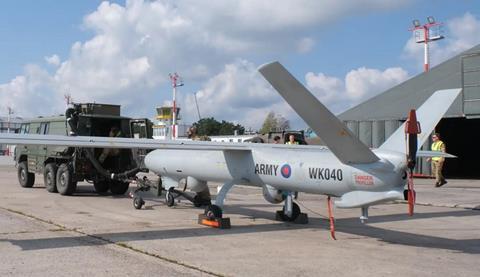
“Exercise Athena Shield has proven a number of key assumptions for the army’s Watchkeeper regiment,” says Colonel Richard Ball, commander of the service’s uncrewed air systems group.
“It has demonstrated the ability to deploy at relatively short notice to a new flying location overseas, conduct planning with the host nation… and shown the utility of the platform to perform the army’s land tactical deep find role.
“It has also demonstrated the army’s commitment to supporting the Estonian Defence Force and securing NATO’s Eastern Flank,” he adds.
No detail has been provided about a potential replacement activity, and it is unclear if this will be considered within the UK government’s Strategic Defence Review activity, which is due to report its conclusions in the first half of 2025.
Also unclear is whether the UK could consider gifting its redundant Watchkeeper air vehicles to Ukraine, or offering them for sale to other nations. London has previously made multiple donations of UAV equipment to Kyiv, involving smaller systems.
“While it is disappointing that Watchkeeper will be coming out of service in 2025, we are proud of Watchkeeper’s success in Afghanistan, support to Border Force and, most recently, being deployed in Estonia,” says Thales UK.
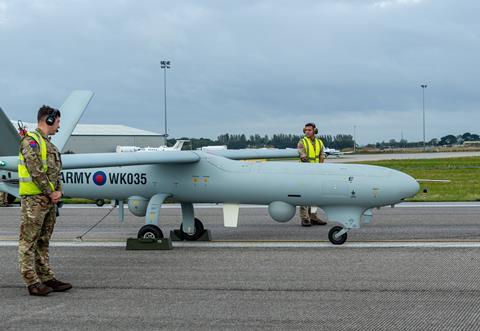
“Thales continues to work with the UK MoD on developing the next generation of uncrewed autonomous systems across domains, and Watchkeeper has provided valuable learnings that can be taken forward into future programmes,” it adds.
In addition to U-TacS’ production and support activities for the British Army, an export-version WK-X air vehicle also has been sold to NATO member Romania. Bucharest in June 2023 signed a deal with Elbit to acquire three systems, with the contract including technology transfer and local industrial participation.























